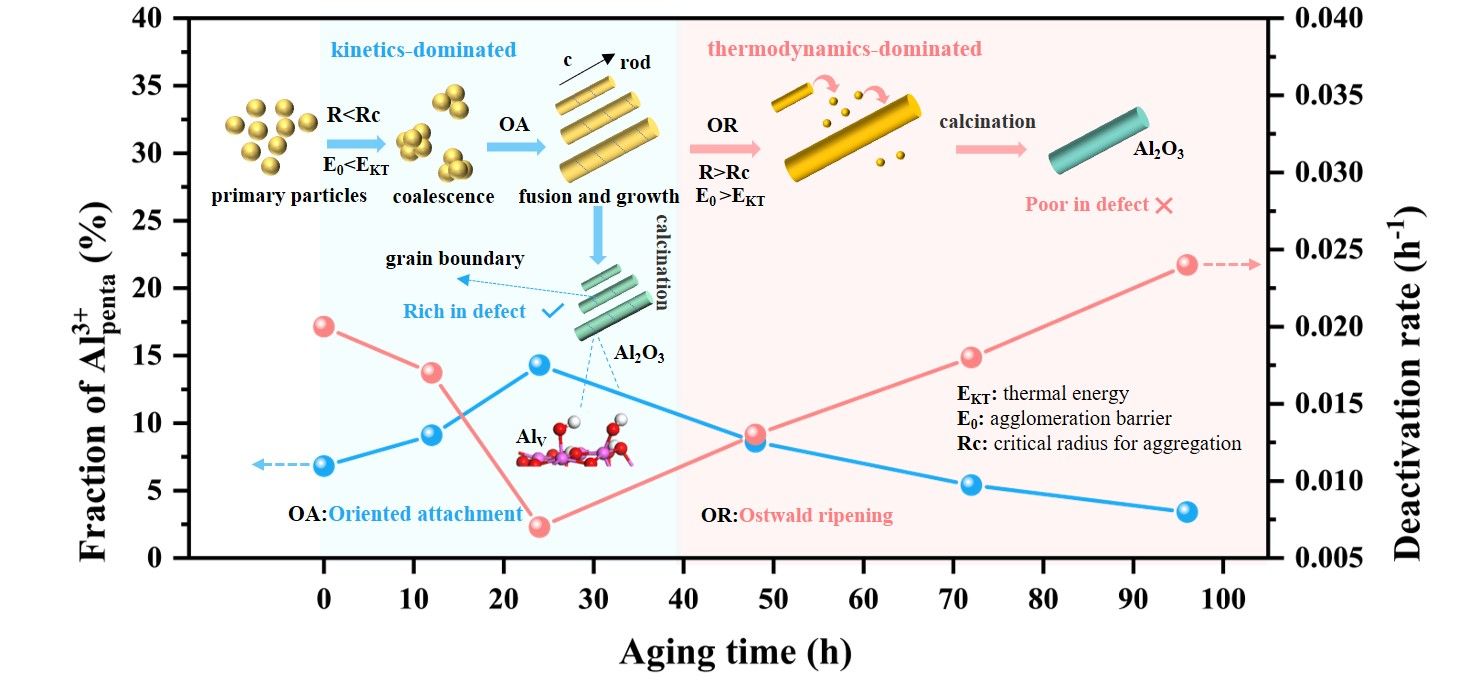祝贺王浩维等同学的文章
“Structure evolution of porous alumina during aging process and its support effect on
PtSn/Al2O3 catalyzed propane dehydrogenation”
被 Chem. Eng. J. 接受发表!

Abstract
Precise control of porous alumina microstructures is always challenging due to the diversity and complexity of the growth process-related alumina crystalline phase and surface properties. In this work, we established a bottom-up synthesis route with a combination of rapid precipitation at high supersaturation and high-temperature aging in terms of enhancing particle aggregation kinetics. Surprisingly, we discovered that there were two distinct growth stages of alumina precursor (ammonium aluminum carbonate hydroxide) during the aging procedure, that is, oriented attachment at the early stage of crystallization and subsequent Oswald ripening. High-temperature aging can effectively strengthen the aggregation kinetics between the particles and produce large mesoporous (∼16 nm) and a remarkable number of defect sites with the exposure of up to 14 % unsaturated pentacoordinate aluminum ions. Owing to the presence of strong metal-support interactions, the alumina-supported PtSn catalyst exhibited excellent catalytic activity in the propane dehydrogenation reaction with propylene formation with 99 % selectivity and superior stability with a low deactivation rate of 0.007 h−1 over 24 h. These results suggested that it was feasible and instructive to achieve precise control of the structure and surface properties of alumina by manipulating the aggregation process of the initial particles during the aging stage.

